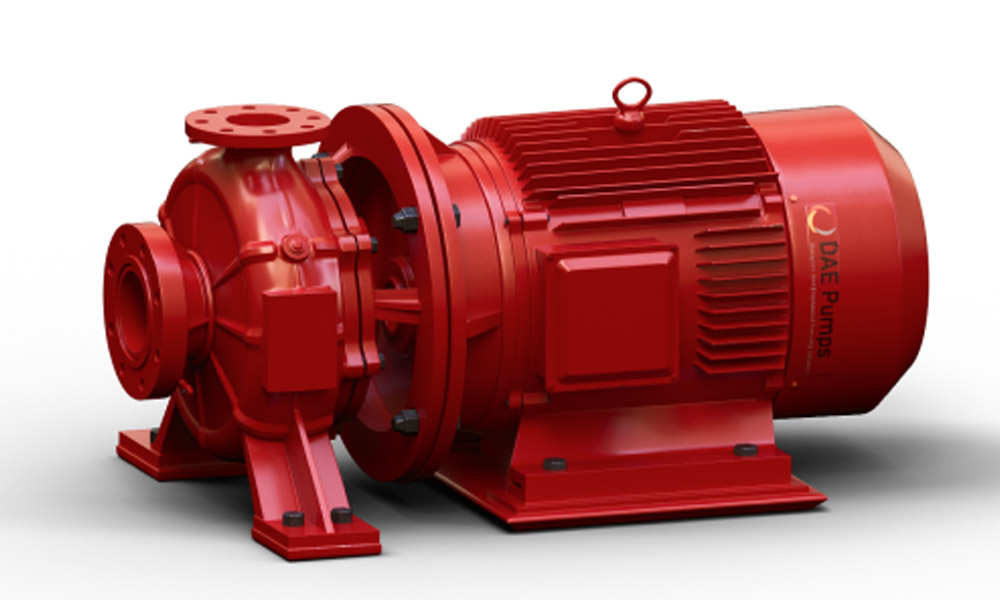Business
The Benefits Of Submersible Dredge Pumps In Large Projects
Published
12 hours agoon
By
Admin
Dredging is an important phase toward modern infrastructure construction, environmental restoration, and resource management. It ensures the maintenance of navigable rivers, promotes land reclamation, and enables the construction of ports, harbors, and reservoirs. Submersible Dredge Pumps, one of several types of dredging equipment utilized in these large-scale operations, have grown in popularity due to their efficiency, adaptability, and longevity.
These pumps are specifically designed for underwater operation, making them highly effective for handling slurry, sediment, sand, and debris in challenging marine or riverine environments. Whether used in coastal protection, mining, or marine dredging, Submersible Dredge Pumps provide a reliable and powerful solution for material transfer and underwater sediment removal.
Understanding Submersible Dredge Pumps
Unlike traditional dredging systems that rely on suction from the surface, Submersible Dredge Pumps are installed directly into the water or sediment layer. This design eliminates the need for long suction hoses, reducing friction loss and improving pumping efficiency. The pump’s proximity to the material source ensures stronger suction and more consistent output, even in deep or highly viscous conditions.
Submersible units are designed by manufacturers such as DAE Pumps to combine robust construction with high-performance motors capable of handling abrasive, dense mixes. These pumps can work at great depths, making them appropriate for large-scale dredging projects where surface-mounted equipment may fail. They are also important components of hydraulic slurry transport systems, enabling continuous and efficient sediment movement.
The primary benefit is their submerged operation, which enables them to operate effectively with minimal energy waste, resulting in higher flow rates and increased total output.
Advantages in Large Infrastructure and Environmental Projects
1. Enhanced Efficiency and Power
One of the main benefits of using Submersible Dredge Pumps is their ability to move large volumes of slurry quickly and efficiently. Since the pump is directly submerged, it eliminates suction lift limitations that affect traditional pumps. This results in higher throughput, reduced energy consumption, and consistent performance even under heavy sediment loads.
Large dredging projects, such as harbor maintenance or river channel deepening, require constant, uninterrupted pumping. Submersible systems are efficient, which reduces downtime, shortens project duration, and ultimately lowers operational expenses. These benefits are especially significant in maritime dredging operations, where vast amounts of material must be regularly moved.
2. Flexibility Across Diverse Applications
Submersible Dredge Pumps are highly versatile and can be deployed in multiple environments and industries. They are used in coastal engineering to remove accumulated silt from ports and harbors, in mining operations for slurry and tailings management, and in agriculture for maintaining irrigation ponds.
In environmental restoration projects, these pumps help remove contaminated sediments from lakes or rivers without causing excessive water disturbance. DAE Pumps offers models suitable for both light- and heavy-duty dredging, enabling project teams to select equipment that aligns with specific material characteristics and flow requirements.
This adaptability also extends to underwater sediment removal, where precision and control are vital to protect sensitive ecosystems while maintaining project efficiency.
3. Reduced Installation and Operational Complexity
Traditional dredging systems often require extensive setup, including pontoons, long suction hoses, and auxiliary power sources. Submersible Dredge Pumps, however, simplify deployment. Since they operate underwater and close to the sediment bed, installation time is shorter and maintenance is easier.
These systems are designed for plug-and-play operation with minimal structural support. Their compact form allows quick relocation between project sites, particularly valuable in large-scale marine dredging operations where mobility and time efficiency are critical.
Additionally, submersible units are quieter and more stable during operation, reducing vibration and mechanical stress on surrounding structures or equipment.
4. Durability and Resistance to Wear
Working with abrasive materials such as sand, gravel, or slurry subjects dredging equipment to significant wear and tear. Submersible Dredge Pumps are engineered with abrasion-resistant materials, such as hardened steel or high-chrome alloys, to ensure long service life even under harsh conditions.
Companies such as DAE Pumps design their pumps with replaceable liners and impellers, allowing for easy maintenance and reduced downtime. The sealed motor housing protects the internal components from corrosion and water ingress, which is especially important for long-term underwater sediment removal and continuous operation within hydraulic slurry transport systems.
This durability translates to greater reliability and lower lifecycle costs for large-scale dredging projects.
5. Improved Environmental Performance
Modern dredging practices emphasize minimizing ecological impact. The design of Submersible Dredge Pumps supports this objective by enabling controlled sediment removal. Because these pumps work directly within the material bed, they reduce turbulence and minimize the spread of fine particles in the surrounding water column.
Because of their precise sediment-handling capabilities, they are ideal for ecologically sensitive tasks such as wetland restoration, riverbed cleaning, and the removal of polluted sediment. Limiting sediment dispersion enables project teams to better comply with environmental regulations and meet water quality requirements during marine dredging operations.
Technological Innovations Driving Performance
The integration of advanced engineering has enhanced the functionality of Submersible Dredge Pumps in recent years. Features such as variable-speed drives, remote monitoring, and real-time performance tracking enable operators to adjust flow rates and monitor wear conditions efficiently.
DAE Pumps incorporates these technologies into its product line, ensuring optimized energy use and improved operational control. Some modern systems also include automatic shutdown mechanisms in case of overheating or overload, increasing safety and reducing the risk of mechanical failure. These enhancements play a vital role in improving the efficiency of hydraulic slurry transport systems across diverse dredging conditions.
With continuous research and development, submersible pump technology continues to evolve, offering greater adaptability, higher efficiency, and enhanced sustainability for complex dredging operations.
Economic and Project-Level Benefits
Beyond technical performance, Submersible Dredge Pumps deliver substantial economic benefits to project owners and contractors. Their high efficiency reduces energy and fuel costs, while their rugged design minimizes downtime and maintenance expenses.
For large-scale projects where time is a major cost factor, the faster sediment-removal rates of submersible systems yield significant savings. The ability to operate continuously under varying conditions ensures predictable project timelines, which is vital for public infrastructure and commercial development projects.
Furthermore, the compact nature of submersible pumps reduces transportation and logistical costs, making them an attractive option for both onshore and offshore marine dredging operations.
Challenges and Operational Considerations
While Submersible Dredge Pumps offer many benefits, they also require proper handling and maintenance. Operators must ensure that electrical connections are secure and that pumps are adequately cooled during operation. Monitoring sediment composition and pump wear is crucial for preventing mechanical failures.
Training operators in safe handling and maintenance procedures can further extend equipment life and optimize performance. Manufacturers like DAE Pumps provide guidance and technical support to help contractors achieve efficient, safe dredging operations, even in demanding underwater sediment-removal environments.
Conclusion
The use of Submersible Dredge Pumps in large projects represents a major advancement in modern dredging technology. Their efficiency, durability, and environmental compatibility make them an ideal solution for complex sediment management in hydraulic slurry transport systems.
With innovations from manufacturers such as DAE Pumps, these systems continue to evolve, offering enhanced control, reduced operational costs, and reliable performance in demanding marine dredging operations.

Aruba Adventures: Best Beaches, Snorkeling & Things to Do

Essentials Hoodie Perfect for Everyday Streetwear

Denim Tears Threads of Memory and Modern Resistance

How Kendrick Lamar’s Sister, Kayla Duckworth, Built Her Own Success

Meet Julian Henry De Niro: The Smart and Talented Son of Robert De Niro

The Benefits Of Submersible Dredge Pumps In Large Projects

E-Learning Mobile App Development Company: Transforming the Future of Education

Cameron Friscia: The Story of Kat Timpf’s Husband, From Military to Marriage

Are You a Candidate for Cataract Surgery London? Signs You Need to See a Specialist

Back to School 2025: What Teachers Really Need on Their Supply Lists

Curious About JOI Database? Read This First Before You Click Anything

Jacqueline Bernice Mitchell: The Inspiring Story of Jerry Rice’s Ex-Wife

Should You Use Wooflix in 2025? Honest Review and Best Alternatives

Where Is Noelle Watters Now? Jesse Watters’ Ex-Wife’s Life After Divorce

Who Is Marlene Knaus? The Untold Story of Niki Lauda’s First Wife

ECMISS: The Intelligent System Behind Smarter Everything

Alisande Ullman Today: What Happened After Her Divorce from Leslie Nielsen?

Where Is Tanya Hijazi Now?: All About Rick James’ Former Wife

What Happened to Frances Cain After Her Split from Jeremy Clarkson?

Where Is Anne Steves Now? The Truth About Rick Steves’ Ex-Wife

Aruba Adventures: Best Beaches, Snorkeling & Things to Do

Essentials Hoodie Perfect for Everyday Streetwear

Denim Tears Threads of Memory and Modern Resistance

How Kendrick Lamar’s Sister, Kayla Duckworth, Built Her Own Success

Meet Julian Henry De Niro: The Smart and Talented Son of Robert De Niro

The Benefits Of Submersible Dredge Pumps In Large Projects

E-Learning Mobile App Development Company: Transforming the Future of Education

Cameron Friscia: The Story of Kat Timpf’s Husband, From Military to Marriage

Are You a Candidate for Cataract Surgery London? Signs You Need to See a Specialist

Back to School 2025: What Teachers Really Need on Their Supply Lists
Categories
Trending
-

 Entertainment4 months ago
Entertainment4 months agoCurious About JOI Database? Read This First Before You Click Anything
-

 Celebrity2 months ago
Celebrity2 months agoJacqueline Bernice Mitchell: The Inspiring Story of Jerry Rice’s Ex-Wife
-

 Entertainment4 months ago
Entertainment4 months agoShould You Use Wooflix in 2025? Honest Review and Best Alternatives
-

 Celebrity2 months ago
Celebrity2 months agoWhere Is Noelle Watters Now? Jesse Watters’ Ex-Wife’s Life After Divorce
